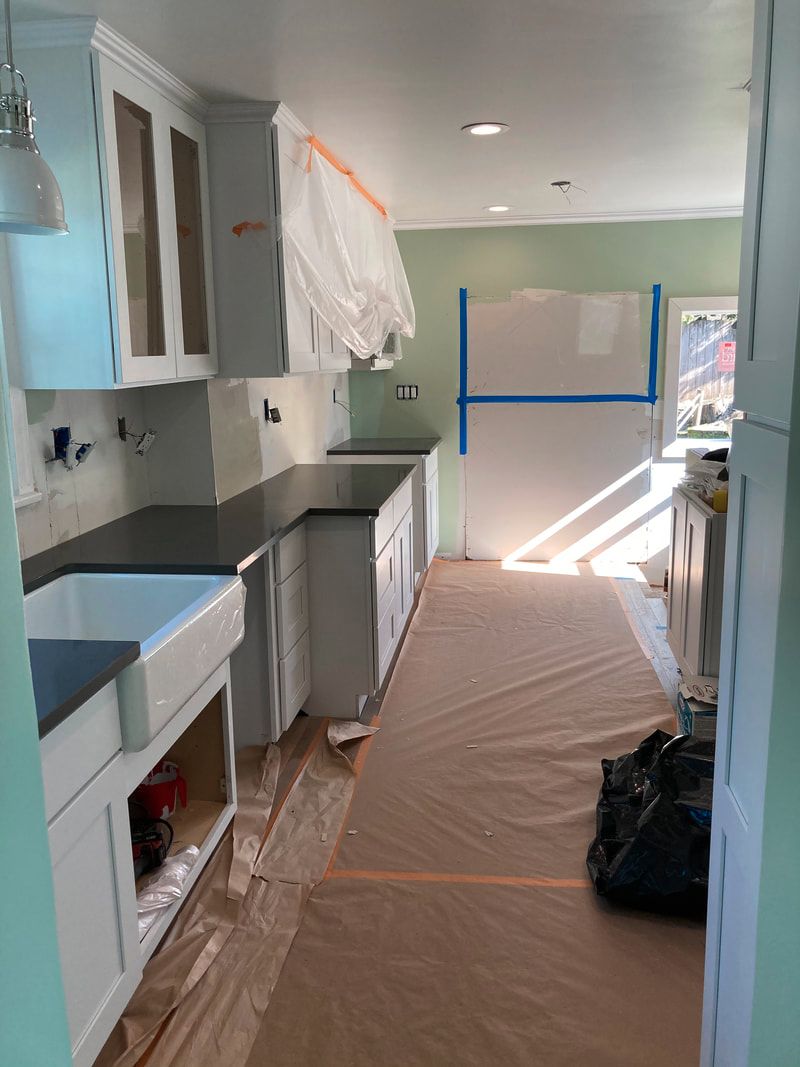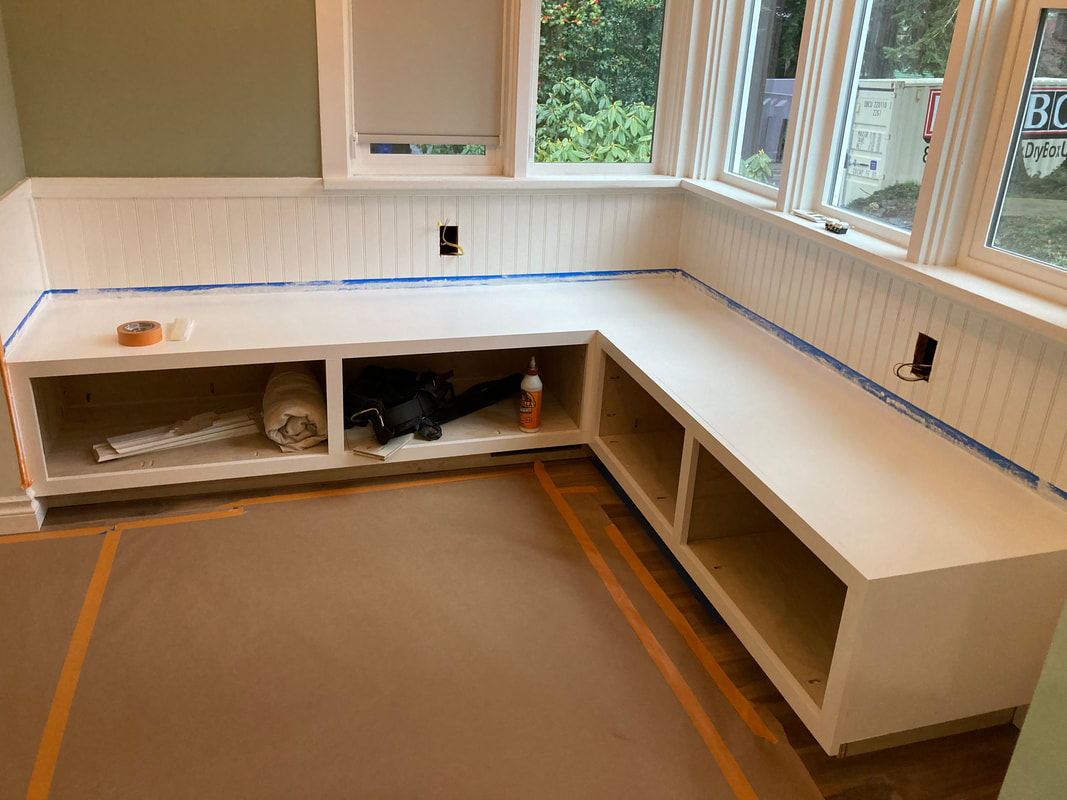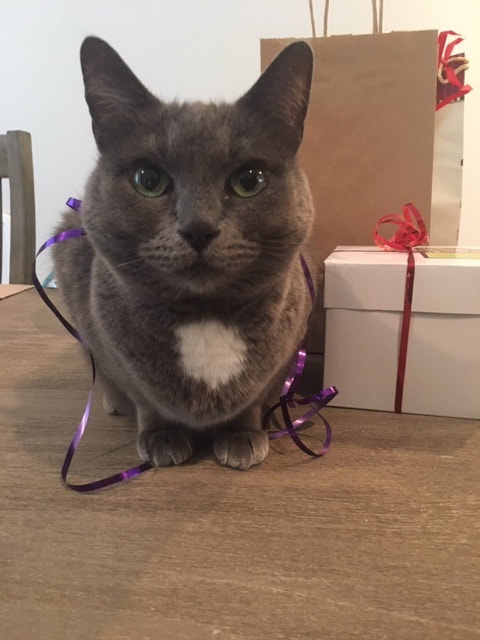|
When my youngest was a tween, he walked into my office, pulled up the exercise ball, sat on it, and said, “Mom, I need to talk to you.” This was a pivotal moment for me as a parent where I knew my reaction to whatever he needed to talk to me about would forever impact his ability to feel secure in expressing emotions and talking about difficult topics with me.
Humans are emotional creatures. We are challenged as a society to be supported in expressing our feelings in a safe manner. Females are characterized as “being emotional”, while men are expected to keep a “stiff upper lip” and not express their emotions. This inability to normalize and express emotions causes grief, stress and conflict. Where do our values about emotions, feelings and conflict originate? Think back to your own family when you were growing up. Was it safe to express your feelings and needs? For example, if you fell and scraped your knee, how did the adults in your life respond to your tears of discomfort? Was your pain acknowledged (“that looks like it hurts”), or was it diminished (“that’s just a little scratch-it doesn’t hurt!”). If there was disagreement in your home, was it safe to express differences or was it better to just “go along to get along”. Did your parents and family engage in discussions about topics where different opinions were welcomed or did your family avoid any topics that may surface conflict. How about discipline and consequences? Our values are generally formed by our early teens. We carry these values forward as adults and parents. Many values are positive and part of your family culture (i.e., religion, education, kindness, work ethic, athleticism, volunteering, etc.). As we raise children, their need for autonomy is expressed and when there is conflict, it may be a result of your own values in conflict with those of your child. In the interactive presentation, Managing and Engaging in Family Conflict, we look at Sources of Conflict, Values around Conflict, Triggers, Active Listening and Techniques for Alternatives to Punishment. This presentation is a culmination of 20+ years as a mediator, mom and the relevance of techniques offered in How to Talk So Kids Will Listen & Listen So Kids Will Talk, by Faber and Mazlish. While this presentation offers techniques for working with your child, the emphasis is on you, the adult, and your own values around conflict. Emotional Intelligence is a skill. Learning self-management and self-awareness, empathy, social-awareness and relationship management, all components of Emotional Intelligence, require understanding, development and practice. Have you signed your child up for piano lessons, Kumon to improve math, a soccer team, or art classes? Each of these activities has someone supporting your child through demonstration, development and practice as they build the skills needed to understand how to make music, be part of a team, and why algebra is important. Practice and repetition. There are also consequences for not showing up and/or practicing. As children return to the classroom this year, they are doing so after 2 very difficult and isolating years. Educators have expressed to me their frustration and inability to provide the high level of social-emotional support children are needing. Teachers can only do so much. Parents and guardians, now more than ever, are tasked to be present, open and emotionally intelligent for their children as well as work in partnership with the other adults in their children’s lives. Our feelings and emotions are what drive us. It creates bonds, love, connection and conflict. By teaching our children skills that allow for effective ways to express feelings and emotions, we support their autonomy, humanness and ability to manage conflict when it arises. When my son pulled up the ball, I took a moment to compose my face, exhale, and be fully present for him. I listened, nodded, said “I see, mmm, oh”, thanked him for talking with me and let him know that I needed some time to digest what he shared. I also let him know that I would follow up with him as soon as I was ready. We parted and I took a long walk to digest the conversation. It was both the most difficult and gratifying moment in my role as a parent. Because I didn’t judge, offer advice or dismiss him during that initial conversation, he continued to trust me with his feelings and be open to important conversations. And isn’t this the goal as a parent to truly be there for our children when they pull up the ball and sit with us?
0 Comments
 “Peace cannot be kept by force; it can only be achieved by understanding." -- Albert Einstein I recently observed a real estate webinar regarding contract clauses that include mediation and arbitration to resolve disputes. The presenter was an attorney. One of the participants asked what the difference was between mediation and arbitration. The presenters response was as clear as mud and a good reminder for me that mediation is misunderstood. In this month’s edition, I am offering a description and examples about mediation and facilitation processes that demonstrate how they can best be used and what you should expect of the mediator or facilitator. The process of mediation has been around since the beginning of mankind. Indigenous cultures have used their own processes of dispute resolution for century’s. Usually it involves an elder or respected member of the clan or tribe to facilitate the process. For example, Native Hawai’ians have Ho’oponopono. It’s a Hawai’ian practice of reconciliation and forgiveness. An elder or invited individual will conduct the process that allows everyone to speak and for the offender to take ownership of the harm that was caused by their action. It’s incredibly powerful and food is always part of the process. The significance of food is that it is something we all need and that it nurtures each and every one of us. Native American cultures each have a similar form of dispute resolution and the Maori of New Zealand are said to be the originators of the adopted Western practice of Restorative Justice. The reason I share this with you is that the roots of Mediation come through powerful practices of working through interpersonal conflicts and healing; mediation did not originate from our legal and court system. It was not intended for interpreting laws; it’s about communication, resolving differences, transforming relationships, and finding common ground. It’s a very human experience and since humans can be unpredictable, I can tell you that I continue to be inspired and surprised by my clients. Mediation is defined as a “generic term encompassing certain conciliatory or nonadjudicative dispute resolution processes that involve intervention by a party not involved in the dispute”. Mediation is also defined as “most simply a facilitated negotiation. An impartial third party (the mediator) facilitates negotiations between disputants…in their search for a resolution of their dispute” (from the Dictionary of Conflict Resolution). Professional Mediators are expected to abide by the rules of their respective State, if such rules are in place. Oregon has adopted the Uniform Mediation Act (UMA) that was collaboratively created in 2001 and is widely adopted by most states. Common principles of mediator standards include: neutrality, confidentiality and self-determination. Before you hire a mediator, confirm that they belong to an association where membership requires upholding UMA standards and a process for resolving disputes you may have with your mediator (such as Oregon Mediation Association, OMA, or Association for Conflict Resolution, ACR, or the Dispute Resolution Section of the ABA), ask if they have liability insurance, and what neutrality, confidentiality and self-determination means to them. Mediators also bring different styles to the process depending on their training, experience and the type of dispute. The following are the three most common styles of mediation: Evaluative: Evaluative mediation is a process modeled on settlement conferences held by judges. An evaluative mediator assists the parties in reaching resolution by pointing out the weaknesses of their cases, and predicting what a judge or jury would be likely to do. This process emerged as courts started referring more cases to “mediation” (mediate.com). This is where you hear the terms “shuttle diplomacy” and “settlements”. It’s less about the interpersonal issues and more about whether or not you would prevail in court. This style is popular in the legal community. Facilitative: In facilitative mediation…a professional mediator attempts to facilitate negotiation between the parties in conflict. Rather than making recommendations or imposing a decision, the mediator encourages disputants to reach their own voluntary solution by exploring each other's deeper interests (pon.harvard.edu). A facilitative mediator will ask questions, clarify, seek out emotions and impact while guiding the parties through the process of negotiation. This is the most common mediation style. Transformative: Transformative mediation is mediation's Paleo diet. It's a back-to-basics and root-source approach to mediation. Instead of seeking resolution (a settlement/agreement), transformative mediation seeks to change (transform) party-interaction, perception and approach to conflict (highconflictinstitute.com). Transformative mediation is most impactful for long-term relationships such as family and workplace. It’s about empowering the parties and transforming the relationship. Other styles include Narrative Mediation (Winslade and Monk) where the mediator works with the parties to reconstruct the story from one of conflict to the one that reflects the type of story/relationship all parties seek. It’s a very intense process and useful for family conflicts. Facilitation: Collaborative process used to help a group of individuals or parties with divergent views reach a goal or complete a task to the mutual satisfaction of the participants (Dictionary of Conflict Resolution). A facilitator will collaboratively work with a group to create and enforce ground rules/group norms; work with strategic partners in establishing an agenda; manage time and difficult behaviors; encourage participation; offer different means to participate and protect confidentiality; collect the group memory and clarify next steps. If you have a team or meeting that tends to be high conflict or unproductive, or you need everyone to participate in the discussion/process, bringing in a third party facilitator can be a valuable use of everyone’s time as the meeting will have structure and role clarification. It also helps to build trust within a team. I hope you find my explanation about mediation and facilitation helpful. If you have any questions, please reach out to me. I believe that this work chose me because I am passionate about fairness and bringing people together to resolve conflict. When people are able to effectively address conflict and communicate together, the results are stronger relationships, teams and organizations. In the poetic words of Mick Jagger, "You can't always get what you want, but if you try sometimes, you might find, you get what you need." #mediation #facilitation #conflictmanagement As I was reviewing the last 2 months, I realized that a remodeling project has characteristics of the grief stages. And here is how it played out for us...
First stage: Denial A project, such as a kitchen remodel generally includes a level of optimism: “It won’t be that bad.” “It’s not gonna really take 4-6 weeks.” “Our experience will be superior from what others experienced.” “It won’t cost us more.” “It’s not that big of a deal to be without a kitchen for a few weeks. Heck, I can lose some weight!” “Nothing will go wrong.” Second stage: Anger As denial becomes less realistic, stronger feelings of frustration manifest into anger. Thoughts of how inconvenient this remodel really is -- what was I thinking?? Feelings of concern about the focus of the contractor and their skill level – do they know what they are doing?? Shorter tempers around family members – why can’t we just be nicer to each other??? Concerns about money turn into a worry about being able to afford the project. Stage 3: Bargaining In this stage, we begin to cling to the threads of hope that it will be okay if we just do this or that. That we have some control over the situation. Examples include: The process will start to pick up and lost time will be made up; that if they just do this one thing then everything will fall into place; if I’m patient, I can be cooking by the end of the week; that if I respond quickly and make everything as “comfortable” as possible for the workers, it will be better. Stage 4: Depression This is when you realize you have no control and that completion is many small steps away. At this point, you are feeling tired and anxious. Every habit has been interrupted and if you typically work from home, you feel doubly displaced. During COVID, options for places to be during the day are extremely limited. Stage 4 is a very dark place during a remodel. Stage 5: Acceptance The best way to move out of Depression is to get to Acceptance. Because a remodel wasn't enough, Mother Nature decided to show her force causing a snowstorm and power outage over several days. On the day that we were sitting in the shell of our home with no heat and no kitchen, we were at a low point. So low that the first day we had power returned, the GC called and asked if the flooring could start being removed the very next day. Our life was so disrupted at that point, that we just went with it. This actually became a turning point for us in the grief process. We moved much of the first floor furniture out to our already full garage in a matter of a few hours. At this point, we were limited to the unheated garage and our small upstairs space. This was no small feat with a dog and cat also in the mix. We knew that this was a key point in the project and that after the challenges we’d already endured, we could do this one last thing to get us closer to our goal. Acceptance brought our family some peace and more kindness towards each other. Anxiety was still prevalent but it no longer controlled our thoughts and actions. If you are considering a remodel, everything I listed in the Denial phase was exactly denial. The key to feeling some control is good communication and kindness. Communication with your GC where expectations are clear and next steps are shared is helpful. If you try to read your GC's mind, you're gonna get frustrated. As will your GC if you expect him to do the same with you. Have conversations upfront and often. Demonstrate appreciation and acknowledgement for work well done. Communicate disappointment and needs directly and professionally. A box of donuts or lunch for the crew can be a nice way to say "thank you", too. #westlandhomeconstruction #remodeling #communication #kindness #conflictmanagement #5stagesofgrief This is the first of a multi-part blog about communication and conflict management during a remodel of my kitchen, during COVID, with a cat and a dog, in a small house with 2 adults. Ask anyone about their experience with remodeling and you will get a variety of responses. None of which will be “best experience ever!”.
We bought our 1923 home 3 ½ years ago. Super charming. Super cute. Super impractical for our lifestyle. The location was what really sold us as well as the bright yellow shingles and steep bungalow roof line. It was not about the kitchen. We love to cook and the kitchen was woefully inadequate. It had the original 1923’s cabinets including the ventilation holes in the cupboards for root storage. I knew a remodel was in the future. I created designs and had mental fantasies about the possibilities. I even had 3 contractors come out and give me estimates. Those estimates quickly put a damper on my fantasies. 2020 was the year of all years, at least for this generation. For us, it was finally time to remodel and apparently everyone else isolated at home thought the same thing. Planning for the remodel began in late summer of 2020 and the first hammer was swung the second week of 2021. A remodel is stressful. Period. Yet, you can manage the stress by being proactive and putting into place conflict management strategies. The most important is to recognize that there are key relationships that a remodel entails. Communication is absolutely key with your contractor(s), family members, neighbors, and workplace. We aren't always at our best when there is disruption at home. Planning upfront as much as possible is the first step. Second is addressing issues when they arise and not ignoring them. Family and Household Members First, check-in with your family members. Reality check if this is really a good time to embark on having your home disrupted for 4, 8, 12 weeks or more. During COVID, we are home working, schooling, entertaining, and eating. If everyone is in the midst of work and school with no alternatives to relocate, this may not be the best time. Next, come up with agreements for your household on how you will all communicate. Ground rules are a good tool to keep everyone on the same page. "Be kind to each other" and "assume positive intent" are 2 agreements that have helped us weather the process. We also agreed that I would solely communicate with the general contractor to avoid micromanaging and misinformation. And recognizing that our home was a worksite between 8:00 am and 4:00 pm during the week, also helped us mentally prepare for and accept the disruption. Create and Post Family Agreements Write down your family agreements and post where everyone can see them. This is a living document that can be added to and amended as your needs change. Get everyone involved in the agreement creation and be creative! Link here to see our Family Agreements Next blog: making the commitment to move forward and working with vendors. “…the more unexpected something is, the more there is to learn from it.” Michael J Fox.
2020 was unexpected. March 15th was not circled on anyone’s calendar as the day that life as we knew it would cease to exist. As the year progressed, employees were furloughed and businesses shut down completely. 2020 also forced to look at our systems that discriminate and create inequities for others based on the color of one’s skin. And as the pandemic continued with no end in sight, our communities struggled, people gathered together to protest violence and inequities, families stayed physically distant for safety, first responders worked relentlessly, and still we got sick and lost loved ones. No one was immune from the key events of 2020. The workplace and business community were forced to either pivot to a new normal or weather the challenges. Were any of us prepared? Despite the fact that my years with FEMA have taught me that organizations should have a Business Continuity Plan (see below) just in case of disasters or interruptions to operations, connecting that type of thinking to a pandemic most likely never entered the realm of planning and thought. However, if we can glean anything from Michael J Fox, 2020 has been a year to learn from. 2020 provided the opportunity to question why we do what we do and the way we do it. I have seen several friends, family and colleagues use 2020 as an opportunity to take a risk by changing careers, going back to school, or moving to a new state. If 2020 had been a “normal” year, the risk of change might have been too great. 2020 was the year where it felt less risky since there wasn’t really an alternative. Others have thrived in their present careers/jobs. Mortgage lenders are working with clients to refinance or purchase homes due to the low rates. Those in delivery and online businesses are working non-stop -- 60, 80 hours or more a week. And our tireless grocery workers keeping us fed (well maybe too well fed!) by showing up every day, cleaning and stocking shelves, and bagging our groceries. Tech, entertainment, and office based businesses have had to rise to the challenges of this year. Yet, the larger the organization, sometimes the harder it is to change. 2020 provided the opportunity for companies of all sizes to push the “pause” button and take the time to internally make those changes due to necessity and vision. As one CEO of a PBJ top 100 Fastest Growing Companies shared, 2020 allowed for the “restructuring of the organization in a much shorter amount of time” because of the interruption that 2020 offered. Her team had the time and motivation during 2020 to “do differently” and beginning January 2021, that is exactly what they will be doing. Other CEO’s and community leaders have generously shared their strategies for keeping employees motivated and their doors open. Another PBJ top 100 CEO shared that “finding ways to celebrate good things…making each other better” as ongoing cultural values that sustained them during 2020 and into 2021. If 2020 has shown us anything, it is that we are resilient and can rise to the challenge. This doesn’t mean that there are quick fixes. Words are important but actions are what demonstrate true change. From Majora Carter, once listed as one of the 100 Most Creative People in Business by Fast Company magazine, “If we are going to be part of the solution, we have to engage the problems.” The calendar has flipped to 2021. There is now hope that didn’t exist 8 months ago in regards to the pandemic. But engaging in the real problems is where the hard work continues. What we learned from the unexpected of 2020 can help us better navigate and do better in 2021 and beyond. With gratitude and a wish to you for a prosperous, healthy and Happy New Year. Most of all, take time for self-care and to just breathe. There will always be time to explore the unexpected... The truth is that I am a terrible marketer. The fact that I have been in business and practicing mediation for 20 years belies my poor marketing record. Given the type of year that 2020 has been -- pandemic, civil unrest, financial hardship, and political turmoil (to name a few challenges) -- the work that I and my fellow colleagues do, which encompasses a commitment to creating and supporting peaceful solutions, is more important than ever. And we need to be actively sharing and promoting what we do !
In the words of many leaders reflecting on 2020, including Tecovas founder, Paul Hedrick: "We're not looking back, choosing instead to look forward with optimism and determination at all the years ahead." As a mediator, I approach my clients with an optimism and determination that given the right opportunity and safe environment, one can begin the healing and start to resolve even the most complex and painful interpersonal conflicts. While we cannot undo the past, we can learn from it and make decisions today and tomorrow that will help us write the story that reflects the life we want to live and the businesses we want to create, operate and work for. Helping Real People Find Real Solutions is more than a tagline. The impact of harmful interpersonal conflict -- stress, anxiety, fear, pain, loss -- is an emotional and financial toll to those directly and indirectly impacted by conflict. Whether it is the team that is unable to complete work timely because of conflict between 2 team members, or a manager that lacks emotional intelligence and causes chaos in the workplace, or 2 parents that are independently trying to raise their children among feelings of hurt and distrust following a nasty divorce, these are real people dealing with real issues that can benefit from the opportunity to rewrite the current conflict story into one that is based on real solutions. How do I support Helping Real People Find Real Solutions? As a mediator, I listen from a space of neutrality, protect the space by keeping all information confidential (with a few mandated exceptions), and facilitate the space for client self-determination of the outcome. Here is an example of the power of mediation that has stuck with me for years: Early on in my career I was working with 2 adult siblings and their respective spouses. They had not talked in years despite living in the same town! The atmosphere in the mediation room was palpably hostile when they first entered and sat down around the table. They wouldn't even look at each other and were curt with me and my co-mediator. They clearly did not want to be there and were fearful about what to expect. I do not recall what the issue was that brought them to mediation that day and they did not come to a resolution during those 2 hours. However, at the end of the mediation session, there were hugs, tears and promises to start reunifying their estranged relationship. I really appreciated the ability of mediation and trusting of the process that created the potential for these siblings to start healing their relationship. It was powerful! I am committed to marketing mediation and the power of effective conflict management but I need your help! Will you please sign up for the eNewsletter (see Home page) and/or share this post with another? Thank you in advance. I look forward to connecting with you and hearing your stories of optimism and determination. #optimism #determination #marketing #conflictmanagement #commitment Leadership is a complex role in any organization. Whether governmental, not-for-profit or private, leaders are tasked with a myriad of expectations by the people that make up the organization. According to several business research articles, effective communication is the top leadership trait of successful leaders; conversely, poor communication is a top cause of ineffectiveness as a leader (see: engagedly.com, huffpost.com, ceocoachinginternational.com, economist.com)
Consistent traits of successful leaders also include: trust, honesty, integrity, appreciation, ability to manage change and give direction, and conflict management. These are all traits embodied in Emotional Intelligence (Daniel Goleman). Successful leaders have learned to keep their focus on leading, not bogged down in the day to day functions and distractions that can be handled more expertly by others. Take a moment to assess your organizational functions and the responsible party:
It is common today to outsource services that allow you to keep the focus on what you do well. Have you outsourced to HR experts to manage your hiring and keep your organization compliant? An accountant to manage the accounts and bookkeeping needs? A mediator who supports interpersonal conflict resolution when 2 or more employees can't get along and are creating a toxic environment? CGMSLLC is offering mediation and conflict coaching outsourcing services to businesses like yours that currently have no other formal resource for addressing interpersonal conflict. The service contract is based on a pre-set number of hours that is customized to fit the size of your organization. Packages start at 15 hours/year for $1200/year. Other services are available to complement the mission and goals of your business. Feeling like this is an expense that you can't afford? Get curious and check out the following link that provides a quantitative analysis of the hidden cost of unmanaged conflict. www.mediationworks.com/conflict-cost-calculator/. Check back on this website for a short video, The Hidden Cost of Conflict, narrated by Communication and Conflict Management Consultant, Sunny Sassaman. This video will walk you through the formula and demonstrate the value of an integrated conflict management system (ICMS). A conflict management partner is part of the ICMS. Please share and comment about your experiences with outsourcing and interpersonal workplace conflict. #icms #dandana #hiddencostofconflict #outsourcing If you are like me, "normal" is hard to now define. In the past 6 months, we have had a pandemic, civil unrest, high unemployment, extreme political polarization, and if you are on the West coast or in the path of hurricanes and flooding, extreme weather events. In Portland, Oregon, we have consistently had the worst weather IN THE WORLD for the last week. My heart goes out to the community of humans, animals and trees that have lost their lives and loved ones as well as their homes and livelihoods. The animal kingdom has also changed as we have seen flocks (yes, flocks) of the downy woodpecker and the state bird, Meadowlarks, in our neighborhood. This comes as the squirrels, birds and even crickets have all but disappeared from the neighborhood. It is eerily quiet (and I'm 50 miles from any fire!). "Normal" for the creatures has changed and they are trying to adapt. Humans are also trying to adapt but it is hard. What was "normal" 6 months ago is no longer appropriate today. A new normal desired by many, especially those impacted by fire, wind, rain, and especially, discrimination. All of these events have gone on continually in our lives but many of us have been spared the pain, loss and unjust treatment. We no longer can. But what do we do about it? How can we be part of creating the new "normal"? First, don't beat yourself up and don't make excuses. I recently had the opportunity to be part of a white affinity group. It was a safe space to talk about my own experiences with race; to just share and listen to others like me. I appreciated this space as my prior experience was in a dialog about race that was a mixed group and it was incredibly uncomfortable and difficult to navigate. At the same time, I appreciated the opportunity to sit with discomfort and just listen to the voices and life experiences of my brothers and sisters who had darker skin than me. Feeling discomfort is something all white people should be experiencing right now. Discomfort about what we are seeing on the news, discomfort about a lack of awareness, discomfort with the privilege we are granted simply because of the color of our skin, discomfort with wanting to be part of the change but not knowing how to create change. I try to listen more, question my own assumptions more, challenge language and perceptions of others, and being not only an ally but also an accomplice to people of color by standing up and questioning systemic processes and individual beliefs. Second, this is an election year. Voting is an American value and right. We need to get out and vote as well as support those who have been marginalized in their voices to make sure their ballots are accessible and counted. Systemic change starts at the top. We can make choices with our wallets and with our ballots. We can change the political rhetoric of everything being politically oriented. I don't know about you, but my top 20 self-identity traits doesn't even include a political identity! My self-identity includes human, mom, partner, mediator, dog lover, fine wine connoisseur, traveler, reader, creative, small business owner, hiker, tree hugger, leader, writer... you get the idea. Before I cast my ballot, I research, read, see what organizations that hold similar values to me endorse on the ballot, and critically contemplate my choices. Sometimes I agree and sometimes I don't. I vote how I want to vote based on my own choice, not what someone else or a political party tells me to do. Sometimes left. Sometimes right. Sometimes down the middle. Sometimes slightly off-center. Sometimes "yes". Sometimes "no". As we navigate a "new normal" and adapt to the changes, I hope that we let go of many old "normal's", remember who we are at our best, create space for humans of all colors, ages, and orientations, act out of love and compassion, put the needs of our forests, waterways and all living creatures that depend on a healthy ecosystem in the front of our decision making, and work together towards a future that builds an inclusive and sustainable world for everyone. #vote2020 #blm #nonracist #compassion #smallcreatures #planetearth Near the border of Oregon and California. That is the sun obscured by wildfire smoke. 9-6-20 T.J. Lake in the Mammoth Lakes Basin, California 8-28-20
Lately, I'm finding myself asking the other person in my house, aka my partner, when he is planning to go into the office or Starbucks or the gym or ANYWHERE as he is always home! I sometimes just look at him sitting at the dining table (which is apparently now his "desk") and wonder why he can't feel my eyes boring into the back of his head; why his computer doesn't suddenly go up in flames!! I say this in jest as we are all spending more time together as we cope with managing our jobs, school and health during this period. It can get a little stressful and being on our best behavior isn't always possible. Fortunately, it is summer so we have the option of going outside to take a walk or sit in the yard or on the deck; we don't always have to be inside the same 4 walls -- sometimes we can go on the other side of the wall! At the same time, we have to keep our sense of humor and since this is one of the things I love about my partner, we have adopted communicating through our cat, Frank. When we want to say something to the other that may otherwise be taken as a criticism, we will start with "Frank says...".
For example, the other day, I found my laundry piling up and my partner had basically commandeered the washing machine. I said, "Frank says that you should remove your clean clothes from the dryer because my clothes are starting to stink". As opposed to me criticizing his need to immediately wash his gym clothes the moment he takes them off, which is what I really wanted to say! Later, my partner said to me, "Frank says that you should water the yard because she's concerned that the grass is looking a little brown". As opposed to hey, stupid, are you planning to let the lawn die?? So who is this Frank cat? First, Frank is a female who is about 8 years old. She has feral genes so she's a bit unpredictable. She's grey and very cute, as far as cats go (yep, I'm a dog person!). She imprinted on my partner and she really only seems to like him. However, if he is gone (ahh, the good ol' days!), she will find my lap, curl up and fall asleep. She has recently become more adventurous and seems to have a little bit of "guard cat" in her. Over the 3 years I've lived with Frank, I've had mixed feelings about her but she has grown on me recently. Not sure why she was given a traditionally male name but she does answer to it! Using "Frank says" is ironic in our home as Frank could care less. First, she is a cat. And second, she is only interested in a warm lap. The reason I share this communication approach is that it keeps humor in our relationship and lightens what could feel like a criticism. My partner and I are not use to spending so much time together. We have strong personalities. We disagree. Using "Frank says" language helps to soften the message and prepares the other by letting them know that the message is important. And since Frank doesn't generally "say" much, if "Frank says", that's our cue that we need to listen. #cat #communication #franksays #listen The following is a statement of intent signed by me and many of my ADR colleagues. As "neutrals", we are declaring that we are not neutral on racism and declare ourselves as not impartial about this issue - not in our private lives, not in our work. The Statement isn't perfect, but it is a start with dialog and active engagement ongoing:
"We are conflict engagement practitioners – mediators, conflict coaches, negotiators, facilitators, convenors, dialogue coaches and more. We assist individuals, organizations and communities to engage with and deal more effectively with conflict. Our collective experience has taught us that where injustice is embedded in the system that is experiencing the conflict, we cannot help bring about a more peaceful environment without addressing the injustice. We stand with our brothers and sisters suffering the injustice and pain of racism, whether it was malicious or unintentionally caused. We stand with all people of color who live in a world made dangerous by racism. Black Lives Matter! We call for an unprecedented effort to address inequity in our systems of governance, economy, housing, employment, healthcare… We also recognize that without disruption, systems of oppression will not change. No Justice No Peace! We fervently hope for peace on our streets, but peace, real peace, meaningful peace, just peace, will only come when the systems of oppression that perpetuate the lethal injustice that killed George Floyd, Eric Garner, Ahmaud Arbery, and Breonna Taylor and so many others are ended. We support those who disrupt the systems of injustice and we recognize that strategic disruption is necessary to achieve genuine change. We will continue to stand with our brothers and sisters who are fighting for justice so that we can then all proudly hold the banner of More Justice, More Peace!" |
AuthorSunny E. Sassaman Conflict Management and Dispute Resolution Consultant Archives
November 2022
Categories
|








 RSS Feed
RSS Feed